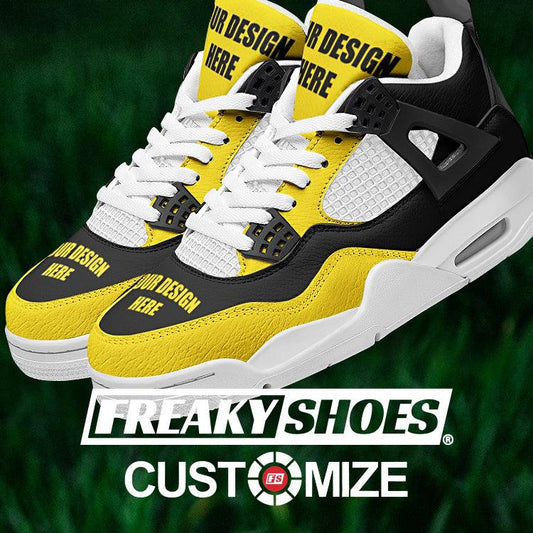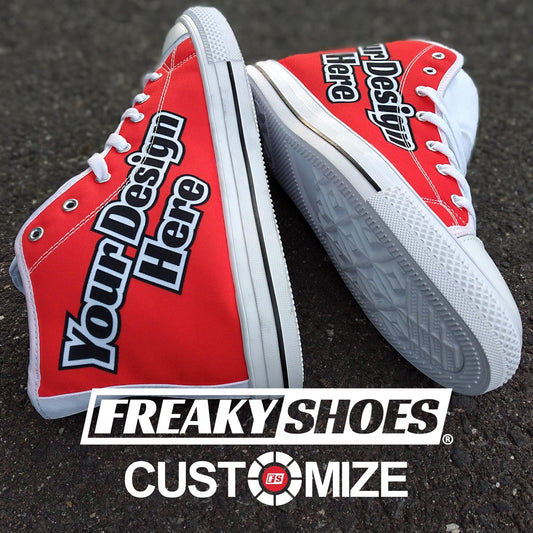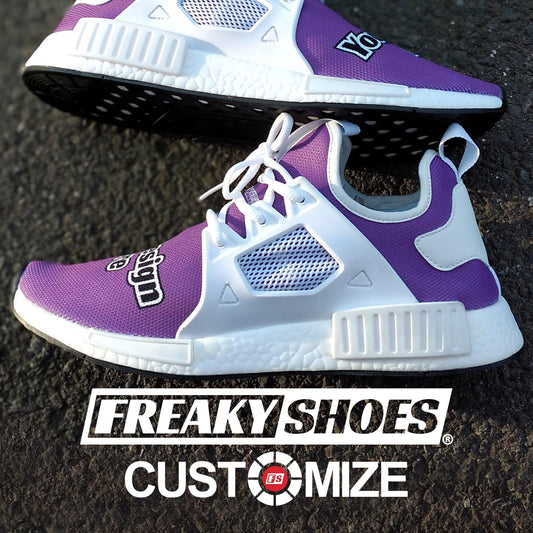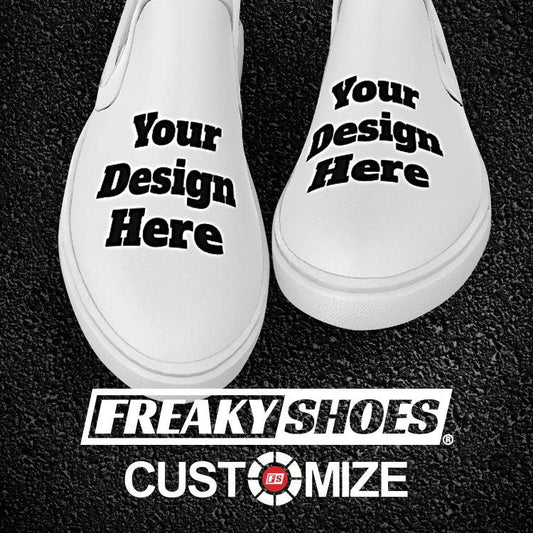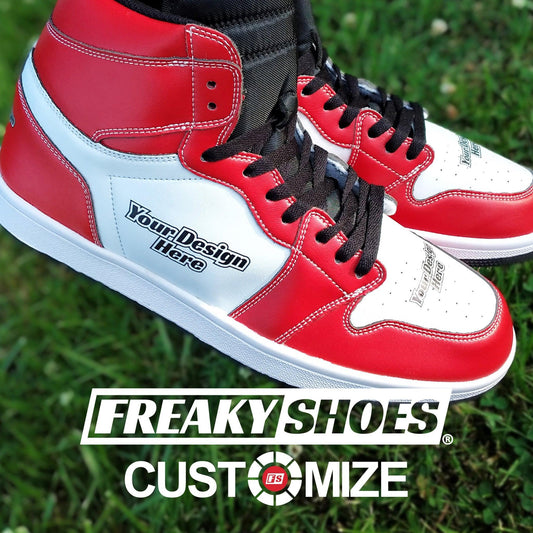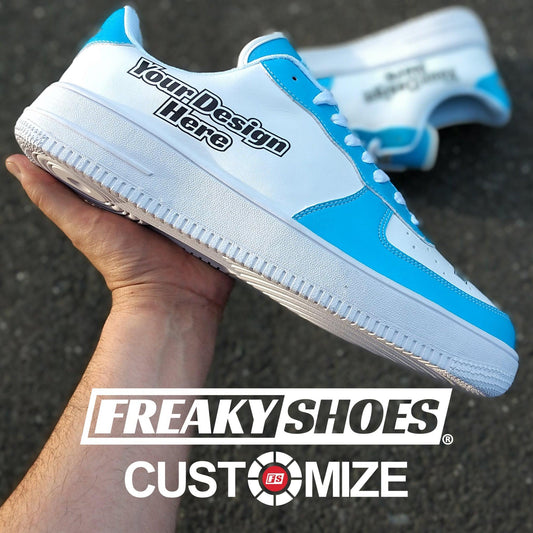Don’t worry. We’re here.
In short:
Y stands for Youth in the footwear industry. If you see “Y” on shoes, it means that they are for those who are big kids or teens (typically between 6 to 12 or 13 years old).
Curious to know more? Here, we’re explaining everything about “Y” size and how you can know what size your kid is.
Key Takeaways
What Does Y Mean in Shoe Size? (Critical Details)

The Y in shoe size means “Youth.” Nike uses this term so that you can pick the right shoe size for big kids and teens. In our opinion, “Y” shoes are perfect for kids from 6 years to 12 years old. Note that the “Y” is the next size after toddlers.
So, if you’re an adult and have seen “Y” shoes, you will probably have the idea that they are not for you.
You may be wondering, “Which Nike “Y” Shoes are the best?” Well, in our experience, the Nike Air Jordan Series is the best. We have also noticed that people love the Air Max series, too.
Y Shoe Size Details
Now, let us tell you a bit more about Y shoe size. We’ve found that Nike has launched 1Y to 7Y shoes. You can guess that 1Y is for 6-year-olds and 7Y is for 12-year-olds. That is also why we’re saying that Y is for big kids and teens.
Here’s the table on Y sizes:
|
Nike Y Size |
Approximate Age Range |
|
1Y |
6 - 7 years |
|
1.5Y |
6 - 7 years |
|
2Y |
7 - 8 years |
|
2.5Y |
7 - 8 years |
|
3Y |
8 - 9 years |
|
3.5Y |
8 - 9 years |
|
4Y |
9 - 10 years |
|
4.5Y |
9 - 10 years |
|
5Y |
10 - 11 years |
|
5.5Y |
10 - 11 years |
|
6Y |
11 - 12 years |
|
6.5Y |
11 - 12 years |
|
7Y |
12 - 13 years |
When we were researching the Y sizes, we also noticed that the above table does not have a hard and fast rule. The reason? Well, every child has different feet. Some kids have wider feet while others don’t.
So, what to do?
Well, we suggest measuring the feet first. After this, you should let your children try the shoes to know whether they will fit properly. We are discussing how you can measure your child’s feet later in this article.
Different Shoe Size Labels For Youth: What Other Brands Use?
Now, let us tell you that only Nike uses the “Y” term. We’ve also seen a few New Balance shoes with the “Y” on them. However, other brands have made their own.
If you’re a shoe fan or just looking to buy shoes for your kids, then it’s important you also understand what other brands are using.
Let’s start with Adidas first. In our opinion, Nike’s biggest competitor is Adidas. It has also launched shoes for big kids and teens. Nike calls them “Y” while Adidas calls them “K.”
We are also big fans of Converse shoes. The brand uses the word “Junior.”
Here’s the complete table:
|
Brand |
Youth Size Designation |
|
Nike |
Y |
|
Adidas |
K (or no specific letter) |
|
New Balance |
Y (or no specific letter) |
|
Converse |
Junior (or no specific letter) |
|
Puma |
Kids (or no specific letter) |
|
Vans |
Kids (or no specific letter) |
|
Under Armour |
GS (Grade School) |
Comparing Y Sizes With Others (Important)
We understand that shopping can be daunting. As a matter of fact, people have told us that they don’t like buying new shoes. The reason they have told us is that there are so many shoe size units now (which they find confusing).
If you also think the same, then don’t worry. We have made a table comparing the “Y” size with others so that you get the shoes you want anywhere in the world.
But that's not all! We've also included foot length measurements in inches, so you can easily match the size to your child's actual foot length. This way, you can ensure a comfortable and proper fit for their growing feet.
Here's the table:
|
Size |
US - CHILD |
UK |
China - MM |
EU |
Foot Length (in) |
|
1Y |
1 |
13.5 |
200 |
32 |
7 15/16 |
|
1.5Y |
1.5 |
1 |
205 |
33 |
8 1/16 |
|
2Y |
2 |
1.5 |
210 |
33.5 |
8 4/16 |
|
2.5Y |
2.5 |
2 |
215 |
34 |
8 7/16 |
|
3Y |
3 |
2.5 |
220 |
35 |
8 9/16 |
|
3.5Y |
3.5 |
3 |
225 |
35.5 |
8 12/16 |
|
4Y |
4 |
3.5 |
230 |
36 |
8 13/16 |
|
4.5Y |
4.5 |
4 |
235 |
36.5 |
8 15/16 |
|
5Y |
5 |
4.5 |
235 |
37.5 |
9 2/16 |
|
5.5Y |
5.5 |
5 |
240 |
38 |
9 4/16 |
|
6Y |
6 |
5.5 |
240 |
38.5 |
9 6/16 |
|
6.5Y |
6.5 |
6 |
245 |
39 |
9 9/16 |
|
7Y |
7 |
6 |
250 |
40 |
9 11/16 |
Note that you can do shopping smoothly if you know your kid’s foot size. We know every parent doesn’t know about it.
But worry not. We are now discussing how you can measure your child’s foot size correctly by following simple steps.
How to Measure Kids Shoe Size Correctly?

We have been dealing with foot measurements for years. After years of experience, we are now sharing the best method.
Here’s how you can measure your kid’s shoe size correctly:
Step 1: The Child Stands Straight, Heels Against the Wall
To start, have your child stand straight with their heels against the wall. Here, we suggest you ensure they are standing as naturally as possible. Why? Well, you want their weight evenly distributed on both feet.
Also, make sure your child’s feet are bare or wearing thin socks.
Remember that the reason for having the heels against the wall is to ensure a stable posture. We highly suggest doing this because it reduces the chance of movement. Keep in mind that any movement can throw off the measurements.
If your child is too young to stand still, you can try measuring while they sit. However, their legs should be stretched out, and their heels should touch the wall. In our opinion, this method isn’t as precise, but it's a good alternative.
Moreover, we also suggest encouraging your child to look straight ahead. This can help maintain their balance. Furthermore, it's a good idea to do this on a hard floor rather than a carpet. The reason is that the soft surface can affect the accuracy of your measurement.
Step 2: Measure Heel-To-Toe, Longest Point
Once your child is in position, the next step is to get a ruler or a tape. You will be using it to find the distance from the heel to the longest toe. Note that this length is the “primary measurement” for sizing.
When measuring, make sure the tape or ruler is straight. Keep in mind that the measurement should be in a straight line from the heel to the tip of the longest toe. Write down this measurement immediately.
Let us also tell you that it’s important to measure in both inches and centimeters if you can. Different shoe brands use different units for sizing charts. So, recording in both inches and centimeters ensures that you can easily convert and compare sizes accurately.
A little tip: measure in the afternoon. Feet tends to swell slightly during the day, and this will give you a more realistic measurement.
Step 3: Measure the Other Foot
Now, repeat the same process for the other foot. We suggest measuring both feet since it’s common for one foot to be slightly larger than the other. But what if you get different measurements? In this case, always use the longer measurement.
Usually, the difference is one to two centimeters. Even if it’s significant, don’t get worried. This is quite normal. Some kids might need a slightly different size for each foot. In this situation, choose brands like FreakyShoes and get custom footwear.
When you’re done, double-check both measurements. We’ve seen that slight errors can happen if the child moves or if the tape measure shifts.
Step 4: Use a Size Chart, Consider Sizing Up
Finally, compare your measurements with a shoe size chart. Most brands have their own size charts, and you can find them online. Since we are discussing Y size in this article, you can find it on Nike’s official website.
In other cases, you should look for charts that include both length and width measurements. This helps in finding shoes that fit perfectly.
Also, keep in mind that children’s feet grow quickly. Therefore, consider sizing up if your child is close to the next size. This way, they won’t outgrow the shoes too quickly.
However, don’t size up too much. Shoes that are too large can cause many problems including, tripping and discomfort.
Here’s what we suggest: Aim for about a thumb’s width of space between the toe and the end of the shoe.
Remember, proper shoe size is crucial for your child’s foot health. We have noticed that shoes that are too tight can cause blisters and discomfort. On the other hand, shoes that are too loose can cause tripping. In some cases, your child’s feet structure can be affected.
So, take this matter seriously.











